After the recent World Gravel Championship, some professional road cyclists have once again come to similar competitions – this was the event called Serenissima Gravel. And their choice of bicycles was sometimes quite interesting.
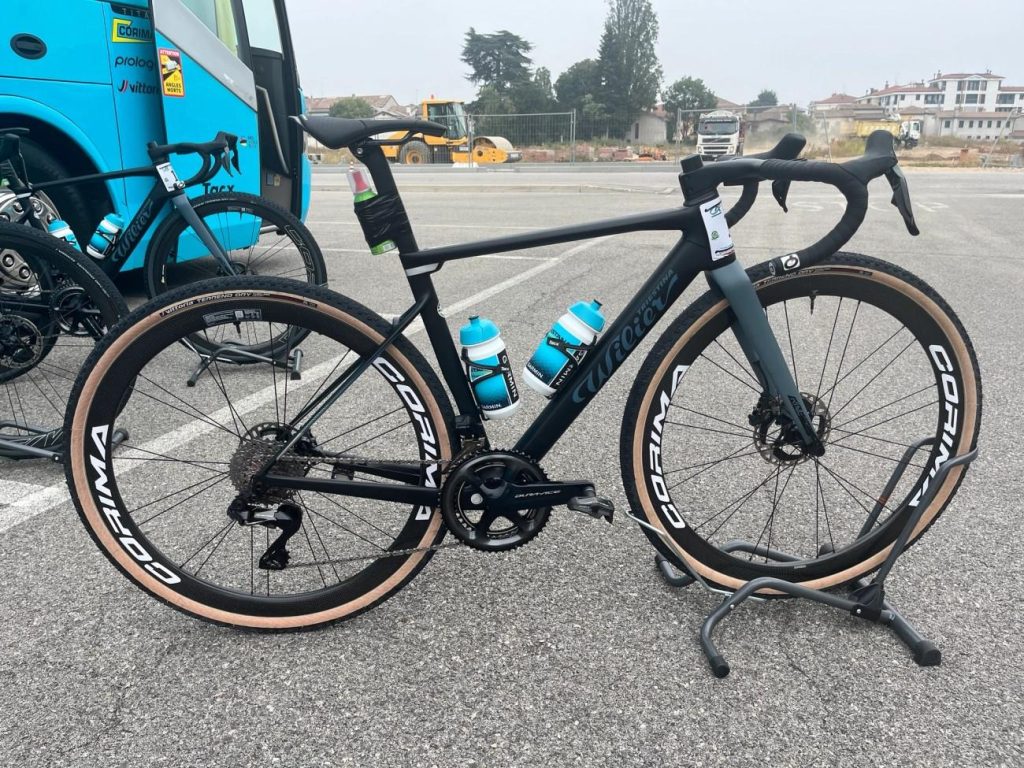
Of course, the main gravel race of the season was the recently held UCI World Championship, but this did not stop other road racers from coming to other races this week. They also took place in Veneto, but the track here was flat and fast, which, of course, influenced the choice of bicycles.
At the start of this race, you could see different bikes – riders from WorldTour professional teams often rode on the same bikes they use on the road. But there were, of course, the latest gravel bikes.
And some of these solutions will definitely be transferred to serial bikes in the coming years.
Wide tires and high rims
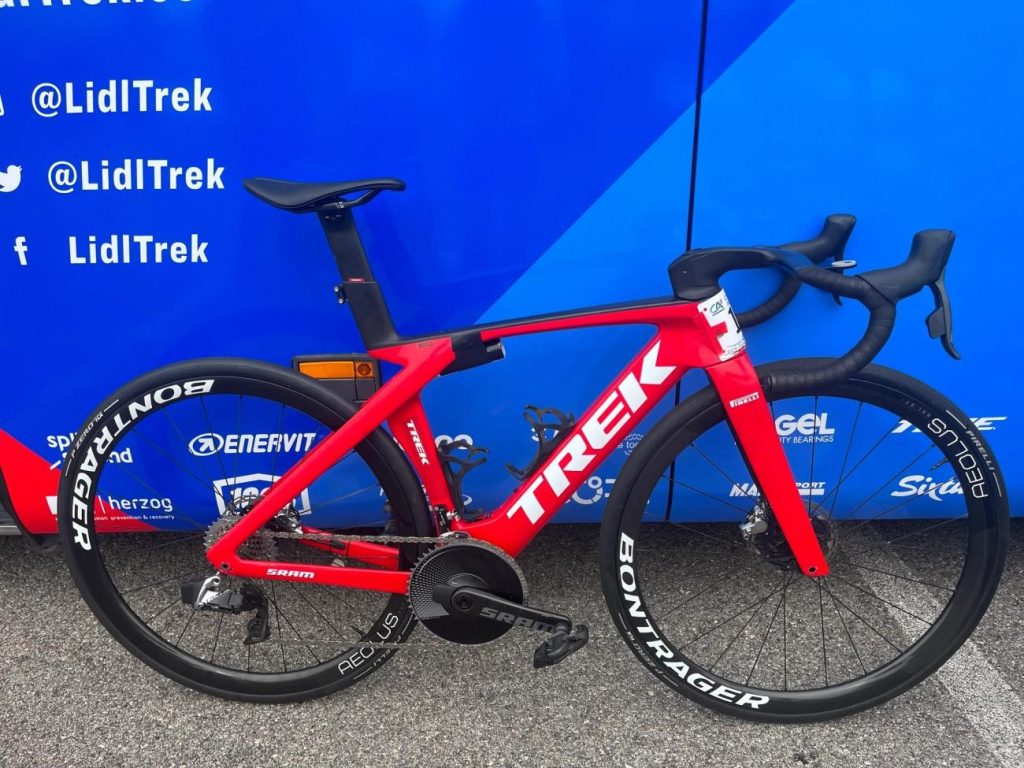
Of course, the tracks in northern Italy cannot compare to the terrible conditions we saw at the Unbound race. Nevertheless, many teams used really wide tires.
For example, Simone Velasco from the Astana Qazaqstan team, who eventually came in fifth, put Vittoria Terreno Dry 38mm tubeless tires on his Wilier Triestina Rave SLR bike. The Uno-X team riders also wanted better rolling resistance – they chose 35mm Schwalbe G-One RS tires for the Gravel Serenissima. They also used DT Swiss ARC 1400 rims that were 62mm high.
Arien Livyns from the Lotto Dstny team used special gravel bike rims – DT Swiss GRC 1400 for this 149-kilometer distance. And he put Vittoria Terreno Dry tires on them. At the same time, although many riders decided to use stronger rims and wider tires, representatives of the Lidl-Trek and Arkea-Samsic teams were clearly not afraid of off-road. They raced on the usual Pirelli P Zero Race tires, only choosing a wider width – 30mm.
And although many thought that the starting position was everything, Anthony Delaplace proved that this was not the case, finishing fourth that day.
Training bikes and old components
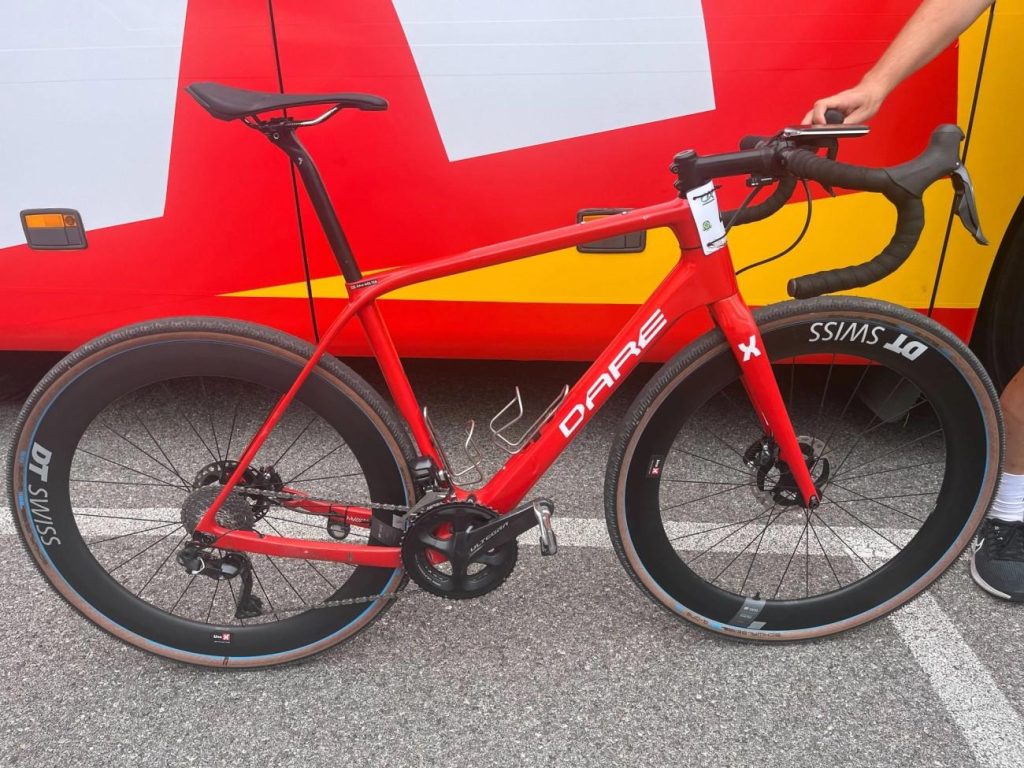
If at this race we saw something that could be described as the “spirit of gravel racing”, it was perhaps the approach of the Uno-X team.
The main starts for the team this week were the road races Giro del Veneto and Veneto Classic, and for these competitions, the riders came with gravel bikes that they use for training in Scandinavia.
At the same time, let’s say, on a bike similar to the Dare GFX Oasis, there were not the newest and best components. There were metal bottle holders and “old-school” SPD-SL pedals – this bike clearly stood out among the others.
And Fredrik Dversnes, who came third, said: “Yes, we don’t put the best components on bikes for this race, but in the end it turned out that everything is working great anyway.”
“On this very bike, I will train on the road in winter, when I am at home, in Norway,” – he added.
Frames for gravel bikes, road bikes, and cyclocross bikes
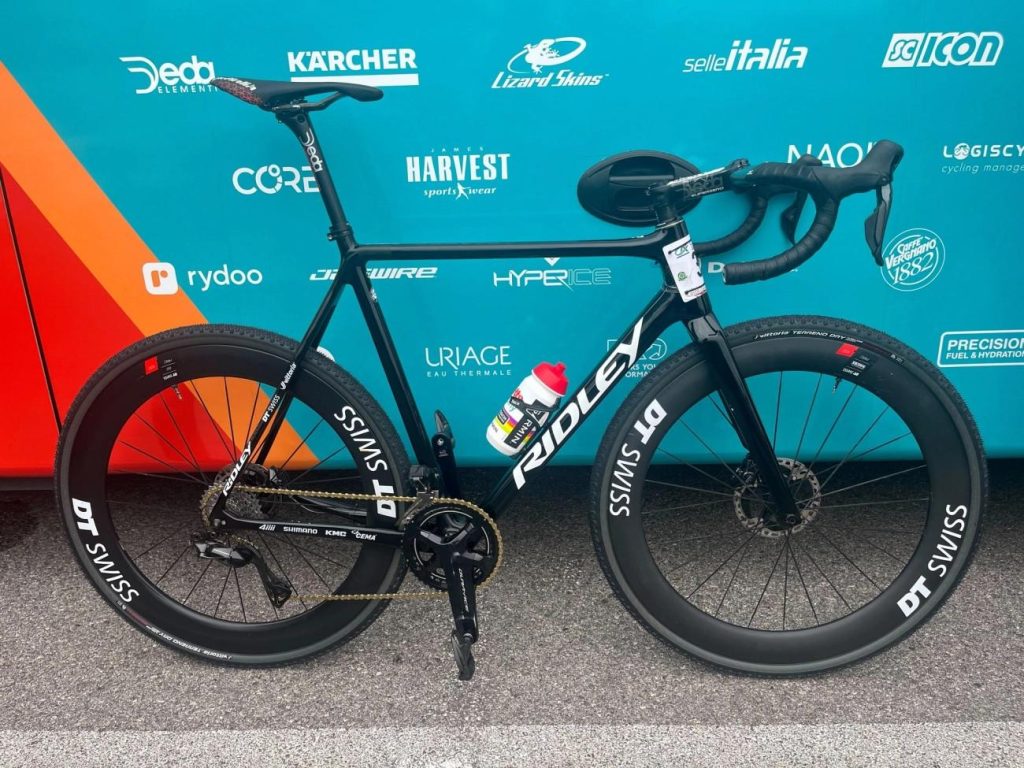
In general, the bikes here were very different, from the new Canyon Grail gravel bikes at the Alpecin-Deceuninck team and the Trek Madone SLR road bikes at the Lidl-Trek team to cyclocross models at Frederik Frison and race winner Florian Vermeersch from the Lotto Dstny team.
Yes, Frison had a Ridley X-Night SL cyclocross bike, which had a road transmission Shimano Dura-Ace, leading stars on 46/39 teeth, and a golden chain.
It’s not entirely clear why Frison ultimately chose the Ridley cyclocross frame, when this company has a specialized gravel bike called the Kanzo Fast, which, by the way, was ridden by other riders from his team.
Quick access to sealant for tubeless tires
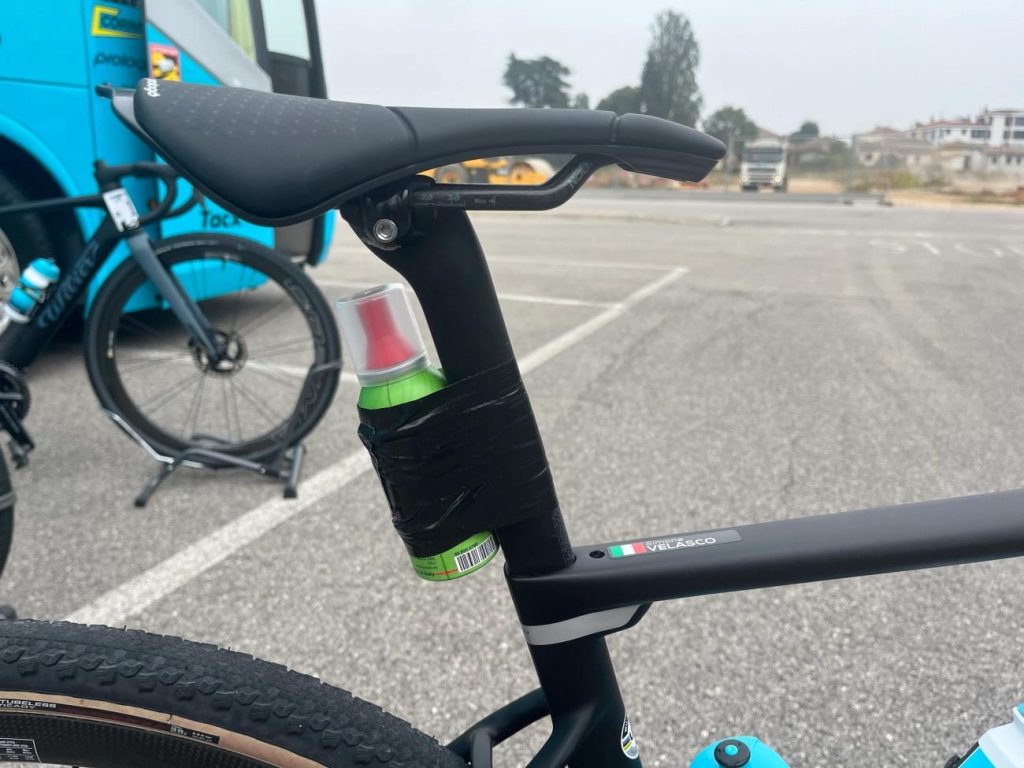
Water bottles are not the only bottles that participants in the race in Italy took with them. Many of them also attached bottles of sealant to their bikes.
There are no technical support vehicles at such races, as they simply cannot accompany riders on narrow and bumpy tracks – usually there are only a few places where you can get help from your team. Therefore, attaching bottles of sealant to bicycles has become quite a popular solution.
Although the sealant is already in the tires and should fill small initial punctures, an additional bottle can still come in handy if you puncture the wheel again.
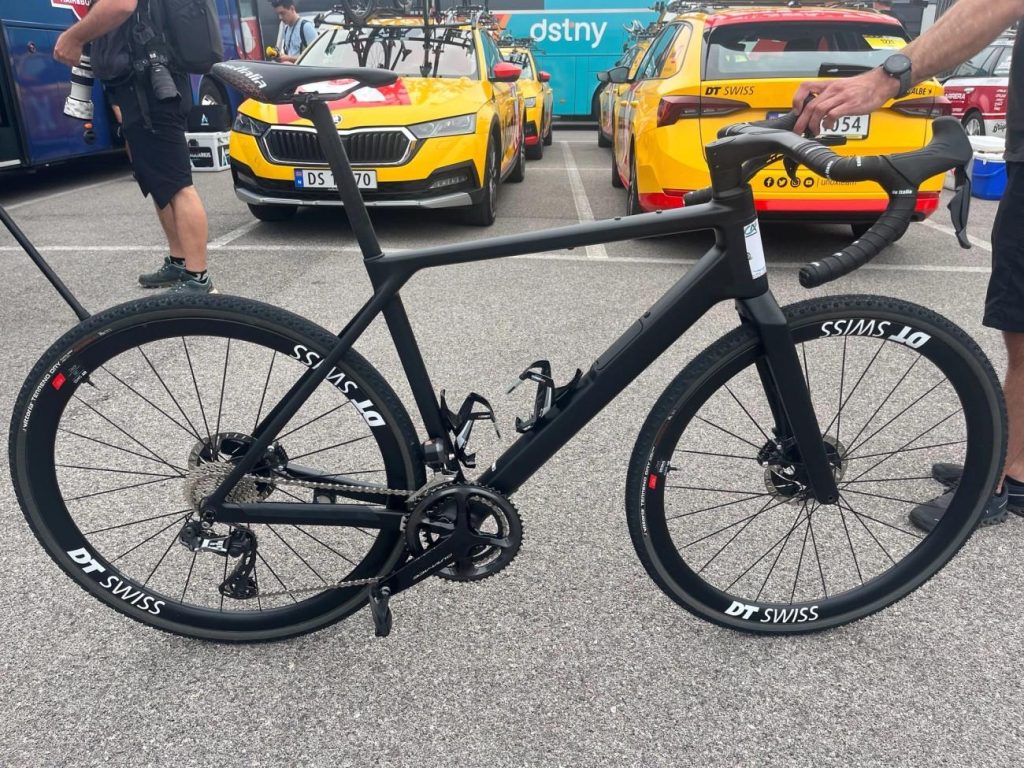
Of course, attaching a bottle of sealant to the frame doesn’t look very aesthetic. And here is where the storage compartment in the new Canyon Grail frame came in handy for the Alpecin-Deceuninck riders. For example, we saw how Silvan Dillier put tire repair materials there.
Single-chainring transmissions
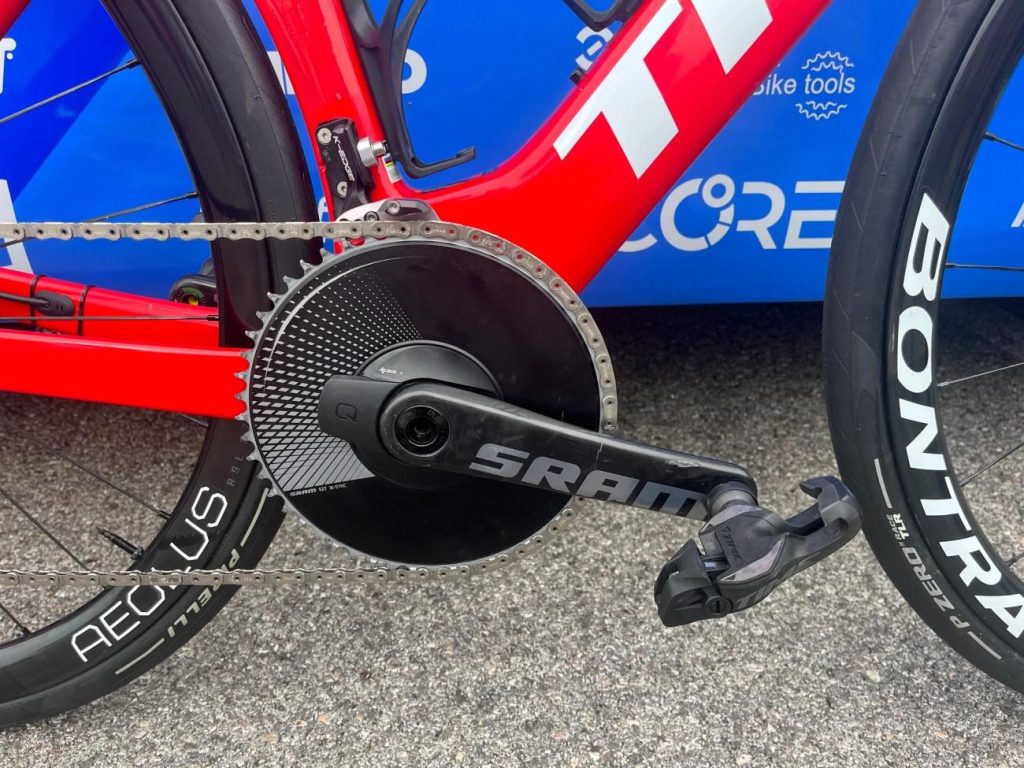
Of course, there are no gravel races without original “1x” transmissions. Here, a single chainring is often used due to its greater reliability, variable tooth thickness (“narrow-wide”), and the simple fact that in this case there are fewer components on the bike – which means fewer reasons for breakdowns and worries.
The track was located on a plain, so many riders chose fairly large front chainrings. For example, in the Tudor Pro Cycling team, there was at least one rider whose bike had a 50-tooth SRAM X-Sync chainring.
However, Jacopo Mosca from the Lidl-Trek team had an even larger chainring – a version of the same SRAM X-Sync model, but with 52 teeth. Interestingly, we didn’t find this on the manufacturer’s website.
Leave a Reply